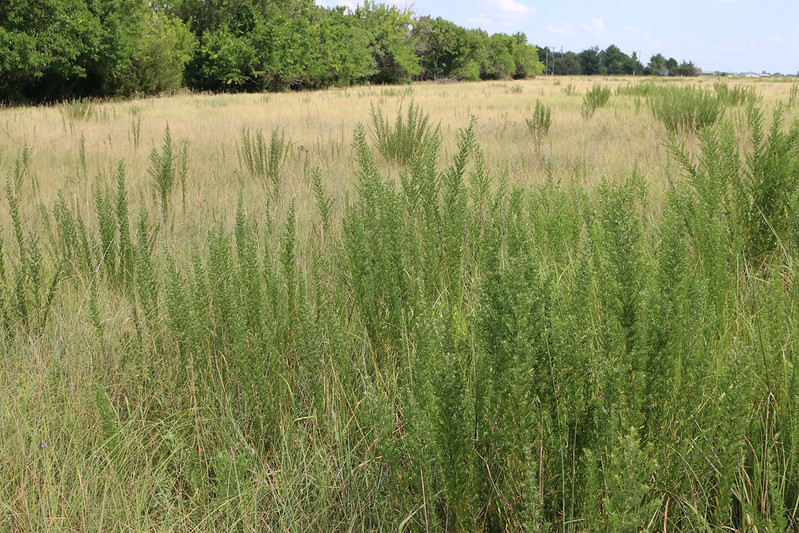If you do a Google search for Sericea Lespedeza (Lespedeza cuneata), you will see results ranging from articles about controlling it as a weed, touting it as a highly invasive forb that creates a tremendous seed bank; to articles that praise its ability to help fight internal parasites in small ruminants. Determination of whether it is good or bad, gets the quintessential Extension answer – It depends.
Villain.

Sericea lespedeza is a perennial legume native to eastern Asia that was originally introduced for erosion control, cattle forage, cover and food for wildlife. But as with many plant introductions during the early and mid-19th century (e.g., multiflora rose, autumn olive, and bush honeysuckle), the original expectations – while well intentioned – did not come to fruition. Sericea has become invasive, is considered noxious in many states, and can be found all over the United States. The traits that should have made it a golden forage, have made it hard to control. Sericea is adapted to a wide variety of conditions: it is able to tolerate and thrive in acidic soils with relatively low soil fertility and is also drought tolerant. Sericea produces an abundance of seed: one plant is able to produce more than 1000 seeds and seeds are thought to be viable for up to 20 years in the seedbank. Sericea responds prolifically following spring fires even though fire is usually the most effective way to manage early successional vegetation. Fire scarifies sericea seed and seedling density is increased following spring fires.
***Among the many cultivated plants that were classified by the Southeast Exotic Pest Plant Council as invasive plants are sericea lespedeza and other non-native forages including bahiagrass, bermudagrass, and tall fescue.
Savior.
Control of internal parasites, especially of Haemonchus contortus (barber pole worm), is a huge concern and expense for the majority of small ruminant producers. A severe infection of barber pole worm causes anemia, bottle jaw, and—if not treated—death of infected sheep and goats.These parasites have become more difficult to manage because of increasing resistance to nearly all available anthelminics (dewormers). Many pharmaceutical anthelmintics for ruminants have become ineffective due to increased gastrointestinal parasite resistance worldwide.
Sericea lespedeza has been scientifically proven to reduce parasite loads in sheep and goats. . Producers should not rely on sericea as the sole method for controlling internal parasites. However, sericea can be useful as one part of a complete parasite management strategy. Sericea has been shown to reduce hatchability and fecundity (egg laying ability) of internal parasites, and in that way it will help reduce pasture contamination with larvae. Also, when used for longer periods of time, it can reduce the number of adult worms. Researchers are working to determine the most effective and economical ways to use sericea lespedeza as a substitute for anthelmintics, or as a “deworming pasture.”
So, good or bad? With selection of improved varieties, proper management and responsible harvesting, the use of sericea for small ruminant production can be very beneficial. Movement of sericea into unwanted areas could be prevented by utilizing the plant so that it cannot produce seeds. This plant does not reproduce vegetatively (by root or stem sections) under field conditions. Livestock can be effectively used to control unwanted vegetation such as sericea lespedeza.
For more information about Sericea lespedeza, visit https://georgiaforages.caes.uga.edu/species-and-varieties/warm-season/serecia-lespedeza.html . For more information about Sericea’s anthelmintic effects visit the American Consortium for Small Ruminant Parasite Control at https://www.wormx.info/sl .